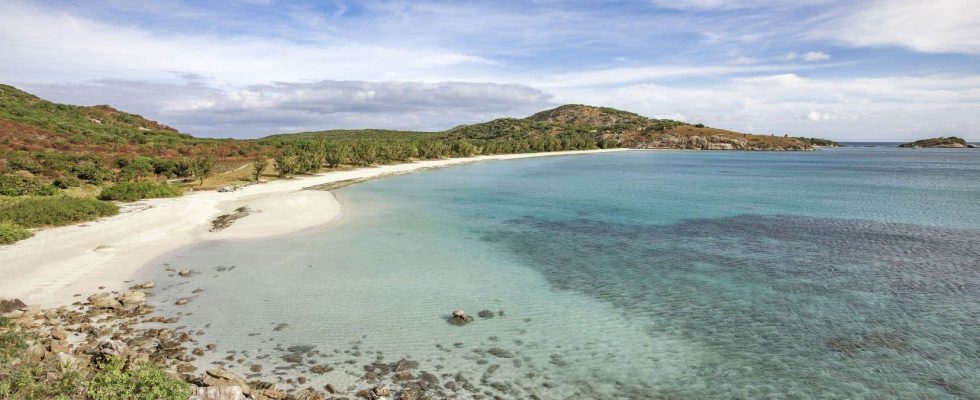This text is part of the special Pleasures notebook
It’s not a place you end up by chance. On the largest coral complex on the planet, in Queensland, Lizard Island mainly sees scientists coming to study the seabed and vacationers attracted by the luxury and intimacy of its only seaside resort. Welcome to the end of the world, champagne to boot.
Flying over the impressive mosaic of reefs, islands and coral beds generates many exclamation points. From Cairns, it takes about an hour aboard a small Cessna Gran Caravan to reach the island once considered sacred by the Dingaal Aborigines, who initiated young men there. We imagine the fish – around 1,500 species – wading among the corals and molluscs in this turquoise expanse speckled with green and brown. When, by pushing open the door to your room, you discover the view, you have to pinch yourself. No superlative seems strong enough to describe the idyllic vision offered to us.
However, it only takes one sentence uttered by a well-meaning employee, after handing us fins, snorkels and anti-jellyfish suits, to come back to reality: “Be careful, a crocodile was seen on the beach this morning. » We then remember all the clichés heard many times about the multiple creatures that can disturb the postcard settings from one end of the country to the other. The reptile – even “a very small one”, as our interlocutor was quick to add – is certainly part of the list. From the most beautiful playground in the world, the horizon suddenly appears to us like a potential crime scene. A little yoga before diving?
Stars and scientists
When we have managed to banish images of sharp-toothed crocodiles from our minds, it will only take a few steps from our terrace to wade with immense turtles. No, we’re not done with exclamation points.
Although boats are authorized to sail in the area, do not dock at Lizard Island, so named by Captain James Cook in 1770 because of the presence of monitor lizards. Only residents of the resort, a few campers with permits and the handful of scientists who have been studying ecology and the impact of climate change for 50 years at the research station circulate on the island. In addition to the forty rooms, suites and villas, a superb three-bedroom house – The House – has been added to the seaside resort’s offering. Overlooking Attenborough Beach, this architectural gem is completely secluded. It is not surprising to learn that wealthy businessmen such as Bill Gates and stars like Katy Perry have found refuge there.
Science and clams
A visit to the research station helps to better understand the incidence of cyclones and the threats to corals. “We were the epicenter of massive coral bleaching events,” says Dr.r Lyle Vail Am, who co-directs the scientific establishment with his wife, Dr.D Anne Hoggett AM, since 1990. “The first took place in 2016 and killed around 83% of the corals around Lizard Island due to the waters being too warm. We had a second episode in 2017,” he explains.
Also linked to global warming, cyclones create strong waves that destroy the ocean floor. “Science now shows that there will be fewer of them in the future, but that they will be more powerful,” says the researcher, accustomed to living with this threat for 30 years. This is exactly what we are seeing. »
However, certain sectors affected by the events of the last decade have managed to regenerate well. We observe it in particular by waving the palm fronds above the impressive clam garden, where the molluscs look nothing like those found in our chowders. Gigantic, the blue, purple, cyan specimens — and a whole palette of bright colors that we spontaneously associate more with birds than with these invertebrates — dazzle as much as any large painting. “Some articles claimed that the reef was dead,” reports D.r Vail Am. This is not true. If we look at North Point, the healing has been good. But I think we cannot be complacent. The reef really needs our help and I believe the best way to do it is to radically reduce our carbon footprint. »
Contradictory to go so far — and spend so much GHG on transport — only to have it repeated? For the scientist, it is especially on a daily basis that our efforts should be concentrated. “The best way to raise people’s awareness and encourage them to reduce their carbon footprint is to show them what could disappear,” believes the researcher.
This content was produced by the Special Publications team at Duty, relating to marketing. The writing of the Duty did not take part.
